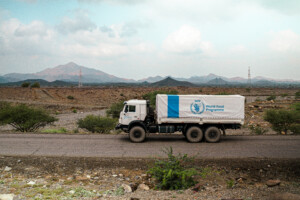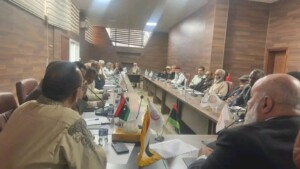Sudan OCHA bulletin 44: Viral haemorrhagic fever cases in Darfur reach 200
The UN Office for the Coordination of Humanitarian Affairs (OCHA) reported in its latest weekly bulletin that according to the Sudanese Ministry of Health (SMoH), a total of 200 suspected viral haemorrhagic fever (VHF) cases, including 104 deaths, were reported in 12 localities in South, East, Central, West and North Darfur as of 30 October.
The UN Office for the Coordination of Humanitarian Affairs (OCHA) reported in its latest weekly bulletin that according to the Sudanese Ministry of Health (SMoH), a total of 200 suspected viral haemorrhagic fever (VHF) cases, including 104 deaths, were reported in 12 localities in South, East, Central, West and North Darfur as of 30 October.
Of the 105 samples taken from suspected cases and people who had contact with suspected cases, and tested at the National Public Health Laboratory in Khartoum, 28 tested positive for Dengue fever in North and West Darfur. A further seven tested positive for Hepatitis E in West Darfur, four were positive for Chikungunya in West and Central Darfur, and nine were positive for White Nile Virus in West, North and Central Darfur.
The state with the highest number of cases was West Darfur (121) followed by Central Darfur (37), North Darfur (34), East Darfur (7) and finally South Darfur (1). West Darfur had the highest number of fatalities (81), followed by 15 in North Darfur, seven in Central Darfur, and one in South Darfur.

In response, the MoH and health partners have prepared an outbreak response plan. Joint verification teams from the SMoH and World Health Organization (WHO) were deployed to the affected states and vector control activities have been initiated in the most affected localities.
Technical guidelines for Dengue fever, as well as WHO guidelines for diagnosis, treatment, prevention and control have been disseminated to all health partners. The UN Children’s Agency (Unicef), World Relief, and Save the Children are supporting health education activities in Kereinik and El Geneina localities in West Darfur. Medical teams have also been deployed to West Darfur to support case management.
Since most of these VHF viruses are transmitted by mosquitoes or contaminated water, the WHO encourages strengthening coordination between health actors and actors working in the water, sanitation and hygiene sector. Health partners have mobilised resources for the initial response but additional funds are required to continue effective response and control the outbreak.
Whooping cough outbreak in El Sereif Beni Hussein
As of 28 October, 410 cases of whooping cough cases have been reported in North Darfur’s El Sereif Beni Hussein locality, according to the SMoH. The outbreak started in early September and has affected all age groups, yet the majority of cases are of people under 15 years. No deaths have been reported so far.
In response, the SMoH, WHO, and health partners on the ground are implementing a three-month action plan in the locality. Médecins Sans Frontières Spain (MSF-Spain) has initiated case management and community awareness-raising activities and between 17-22 October, the SMoH vaccinated over 16,600 children under five years. The rate of transmission seems to be decreasing, according to WHO.
Suspected cases of Acute Jaundice Syndrome (AJS) in Shangil Tobaya
According to the SMoH, the cumulative number of all suspected Acute Jaundice Syndrome (AJS) cases in North Darfur’s Shangil Tobaya stood at 104 on 27 October. The SMoH has sent nine samples to the National Public Health Laboratory in Khartoum for confirmation. Results are still pending.
In the meantime, WHO, SMoH and health partners have started strengthening health promotion activities and are coordinating with water and sanitation partners to improve water quality and strengthen hygiene interventions.
800 homes damaged by rains in Central Darfur
An estimated 2,000 people in Central Darfur’s Zalingei locality whose homes were damaged by heavy rains are in need of humanitarian assistance, according to the government’s Humanitarian Aid Commission (HAC).
On 20 October, an inter-agency mission visited the affected villages of Kurgo, Kankulei and Golba to assess the situation. Findings identified 86 households (about 430 people) as eligible for emergency shelter and household supplies. Other humanitarian needs include education, health, as well as water and sanitation services.
In Deleig in Wadi Salih locality, heavy rains reportedly destroyed 405 homes, affecting an estimated further 2,000 people. Strong winds also destroyed the nutrition centre in the Deleig camp for the displaced, run by the International Medical Corps. The centre provides health and nutrition services to the estimated 21,000 people displaced in the camp and people from the host community. Rehabilitation of the nutrition centre is currently ongoing.
More than 197,600 South Sudanese refugees in Sudan
The total number of South Sudanese refugees, who arrived in Sudan since violence erupted in South Sudan in mid-December 2013, stands at 197,635 as of 28 October, according to the UNHCR.
The 2015 South Sudanese Regional Refugee Response Plan was launched on 17 December 2014, with inter-agency requirements for Sudan set at $152.1 million. As of 22 October, the response plan had received 22.5 percent of Sudan’s requirements.
In White Nile state, the water, sanitation, and hygiene services remain worrisome in most of the refugee sites except for Dabat Bosin, according to the UNHCR. The water supply in most sites is below the UNHCR post-emergency standard of 20 litres per person per day. Moreover, most sites far exceed the UNHCR post-emergency standard of 20 people per latrine, with El Redis II the highest with 196 people per latrine. UNHCR and partners are working to meet acceptable standards in water and sanitation services.

8,500 basic school children in Blue Nile to benefit from school feeding programme
About 8,500 primary school children in Blue Nile’s Geissan locality have been targeted for a school feeding programme aimed to encourage school enrolment. The Adventist Development and Relief Agency (ADRA) in Blue Nile State signed a technical agreement with HAC to implement this programme.
The programme also includes livelihood initiatives that aim at improving the income of the families of students and prevent them from dropping out of school to work. According to the Sudan Out-of-School Report issued by the Ministry of Education and Unicef on 10 September, about 46.8 percent of basic school-age children in Blue Nile state are out of school.
Of the enrolled children in the state, more than 40 percent do not have seats in their classrooms and sit on the ground. More than 40 percent of the schools lack access to clean water and latrines.
Read the full bulletin here











 and then
and then